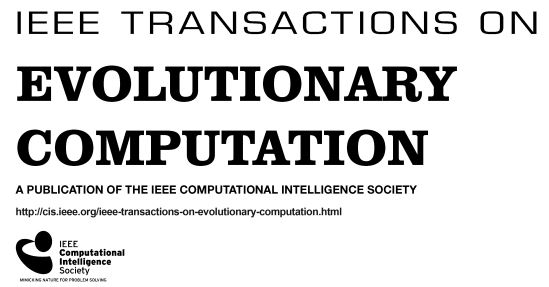从直接变量依赖关系到定向变量依赖关系 - 在现实世界和理论问题中发现非对称依赖关系
IF 11.7
1区 计算机科学
Q1 COMPUTER SCIENCE, ARTIFICIAL INTELLIGENCE
引用次数: 0
摘要
本文章由计算机程序翻译,如有差异,请以英文原文为准。
From Direct to Directional Variable Dependencies—Nonsymmetrical Dependencies Discovery in Real-World and Theoretical Problems
The knowledge about variable interactions is frequently employed in state-of-the-art research concerning genetic algorithms (GAs). Whether these interactions are known a priori (gray-box optimization) or are discovered by the optimizer (black-box optimization), they are used for many purposes, including proposing more effective mixing operators. Frequently, the quality of the problem structure decomposition is decisive to the optimizers’ effectiveness. However, in gray- and black-box optimization, the dependency between the variables is assumed to be symmetric. This work identifies and defines the nonsymmetrical (directional) variable dependencies. We show that these dependencies may exist (together with symmetrical) in the considered real-world problem, in which we must optimize subsequent variable groups (one after the other) in the appropriate optimization order that is not known by the optimizer. To improve GA’s effectiveness in solving the problem of such features, we propose a new linkage learning (LL) technique that can discover symmetrical and nonsymmetrical dependencies (in binary and nonbinary discrete domains) and distinguish them from each other. We show that telling these two types of dependencies from each other may significantly increase the optimizer’s effectiveness in solving real-world and theoretical problems with nonsymmetrical dependencies. Finally, we show that using the proposed LL technique does not deteriorate the effectiveness of the state-of-the-art optimizer in solving typical benchmarks containing only symmetrical dependencies.
求助全文
通过发布文献求助,成功后即可免费获取论文全文。
去求助
来源期刊

IEEE Transactions on Evolutionary Computation
工程技术-计算机:理论方法
CiteScore
21.90
自引率
9.80%
发文量
196
审稿时长
3.6 months
期刊介绍:
The IEEE Transactions on Evolutionary Computation is published by the IEEE Computational Intelligence Society on behalf of 13 societies: Circuits and Systems; Computer; Control Systems; Engineering in Medicine and Biology; Industrial Electronics; Industry Applications; Lasers and Electro-Optics; Oceanic Engineering; Power Engineering; Robotics and Automation; Signal Processing; Social Implications of Technology; and Systems, Man, and Cybernetics. The journal publishes original papers in evolutionary computation and related areas such as nature-inspired algorithms, population-based methods, optimization, and hybrid systems. It welcomes both purely theoretical papers and application papers that provide general insights into these areas of computation.
 求助内容:
求助内容: 应助结果提醒方式:
应助结果提醒方式:


